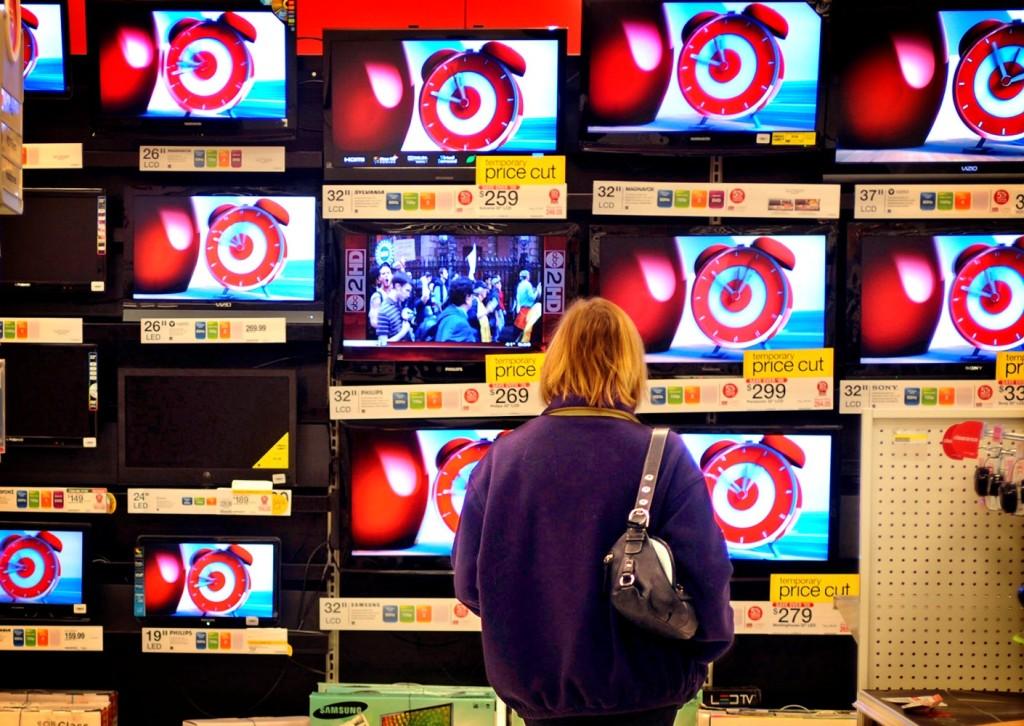Black Friday: how do we survive it?
November 19, 2013
Americans on Thanksgiving Day eat turkey and pumpkin pie, watch football and the Macy’s Thanksgiving Day Parade, and of course, give thanks and spend time with their family and loved ones. Thanksgiving Day is also common for many people to look at advertisements of sales. This leads to the early holiday tradition that we all love to hate– Black Friday shopping.
We all see the videos on YouTube and the news every year where shoppers get trampled or get into physical fights, usually over the last iPhone available in black. As shocking and silly as that seems to us, this shows just how materialistic society is today.
Junior Rachael Strasberger agrees. “It’s ridiculous what people go through just to get a good deal on something. There are so many people wanting the same things you want. It’s cold, and most of the people shopping in the same stores as you are mean. I don’t get it.”
According to the National Retail Federation, last year, a whopping 247 million Americans went Black Friday shopping, and the average person spent $423.66. (The total amount spent? $59.1 billion).
One of these people who contributed to the $59.1 billion of sales is junior Colleen Laverty.
“I went shopping with my friend around 10:30 in the morning, so it wasn’t too crazy. We got a lot of great deals. I got a $50 sweatshirt for $5, so I was excited about that,” said Laverty.
Impulse shopping is a downside to great deals. “There were some things that I bought that I wouldn’t have normally gotten if it wasn’t so cheap,” Laverty says.
Most Americans on Black Friday and throughout the holiday season claim that they mostly buy presents for family and friends, and don’t generally buy things for themselves. Strasberger, Laverty, and Cristina Magnanelli, also a junior, agreed with this statement.
These three students also agreed on another topic, they prefer shopping in store compared to shopping online.
“At stores, you get to actually see what you’re buying, and in some cases you can try it on. I like that much better than seeing it on a screen.” Magnanelli said.
But seeing products on a screen is more enticing to some consumers today. Cyber Monday is yet another materialistic phenomenon in America.
Cyber Monday was created in 2005, since “retailers noticed that many consumers were too busy to shop over the Thanksgiving weekend or did not find what they were looking for in the stores they shopped at” according to Experian, a website that specializes in marketing. Last year, the total amount spent on Cyber Monday was $1.5 billion.
Teens today don’t seem to hunt down deals on Cyber Monday, they either have their parents do it, or they don’t even shop online at all to begin with.
Magnanelli and Strasberger both say they shop online about once a month, buying a few clothes here and there, if they “find something that looks like it fits and is a good price”.
Laverty says that she rarely ever shops online.
As of November 5th, Black Friday advertisements are already in full swing. Popular stores like Toys R Us, Target, Walmart, and Kohl’s have had “leaked” ads online stating deals that customers can receive this year.
Most of these 2013 deals are technology related.
Walmart’s claim to fame this year is that they are offering a Sceptre 50” Class LCD 1080p 60Hz HDTV for $399. It’s original retail price is $599.
While most of teens aren’t looking for TV’s and other big ticket items, plenty of teens may be found looking for a good deal at their local mall.
Laverty’s advice for surviving Black Friday is rather simple. “Bring lots of money and a buying plan in mind.”
There will be an estimated 74 million people shopping on Black Friday this year. Will you be one of them?



